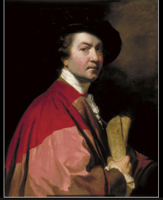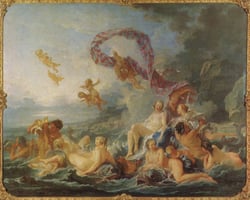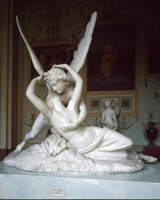A Look at the Accomplishments of Sir Joshua Reynolds, Preeminent English Painter of the 18th Century
Sir Joshua Reynolds (1723-1792) was an English painter, credited with introducing the Rococo style...
Luca Giordano is an Italian Baroque painter known for his dynamic compositions and vibrant use of color. He is considered one of the most successful painters of the period, and his work can be seen in many of the major art galleries and museums throughout the world. Born in Naples in 1634, Giordano was the son of a stone mason and studied under the renowned painter, Aniello Falcone.
Under his tutelage he developed a skill in painting that caught the eye of many patrons and soon Giordano was working on several major commissions, including frescoes for the churches of San Giovanni in Monte and San Rocco. Giordano's style was heavily influenced by his mentor and his own eclectic education, combining elements of Michelangelo's grandeur and Caravaggio's chiaroscuro.
He incorporated intense colors, dynamic movement, and figures that were in constant motion. His works often depicted historical, religious, and mythological scenes, and he was particularly adept at incorporating figures from different periods into the same painting. Giordano focused much of his work on the depiction of figures in movement and his style was often referred to as “Fiero”, meaning brave, bold, or fierce. He was keen to portray the emotion, energy, and dynamism of the moment, and he was adept at capturing the physicality of his figures.
His works often featured dramatic poses, dynamic gestures, and intense facial expressions that allowed the viewer to feel the emotion of the scene. Giordano had a successful career in Italy, but later moved to Spain to take a series of royal commissions. He eventually returned to Italy where he was appointed court painter to the Spanish Viceroy of Naples. He continued to work on major commissions and was a popular figure in the art world. Giordano's work is often compared to the work of Caravaggio and Rubens, but he was unique in his own right.
His vibrant use of color and his incorporation of movement into his compositions set him apart from the other Baroque painters of the period. His work still stands as an example of the art of the Baroque period, and his vibrant use of color continues to inspire modern painters today.

Sir Joshua Reynolds (1723-1792) was an English painter, credited with introducing the Rococo style...

18th-century art was a period of great creativity and innovation. This period of art was heavily...

Rococo art period is a form of art that flourished in Europe between the late 17th and early 18th...